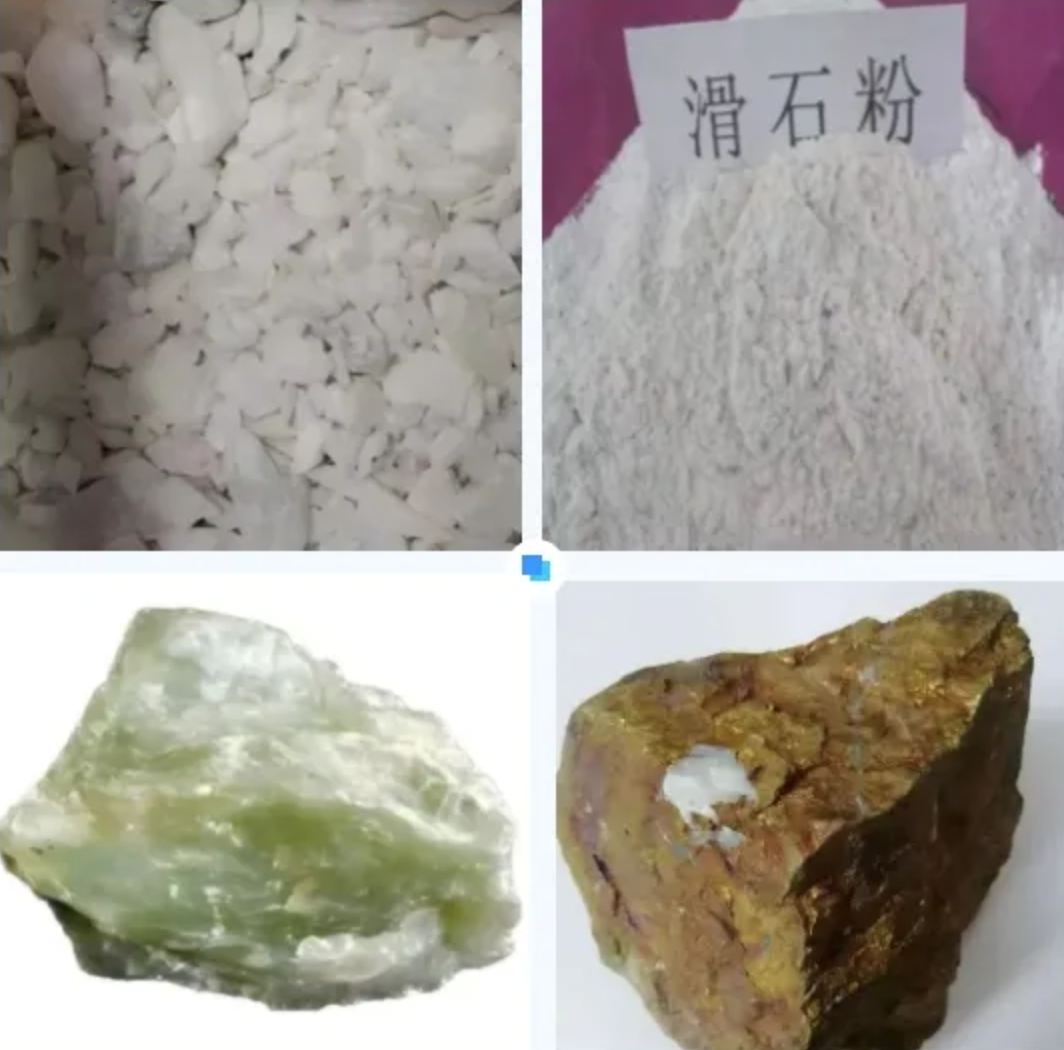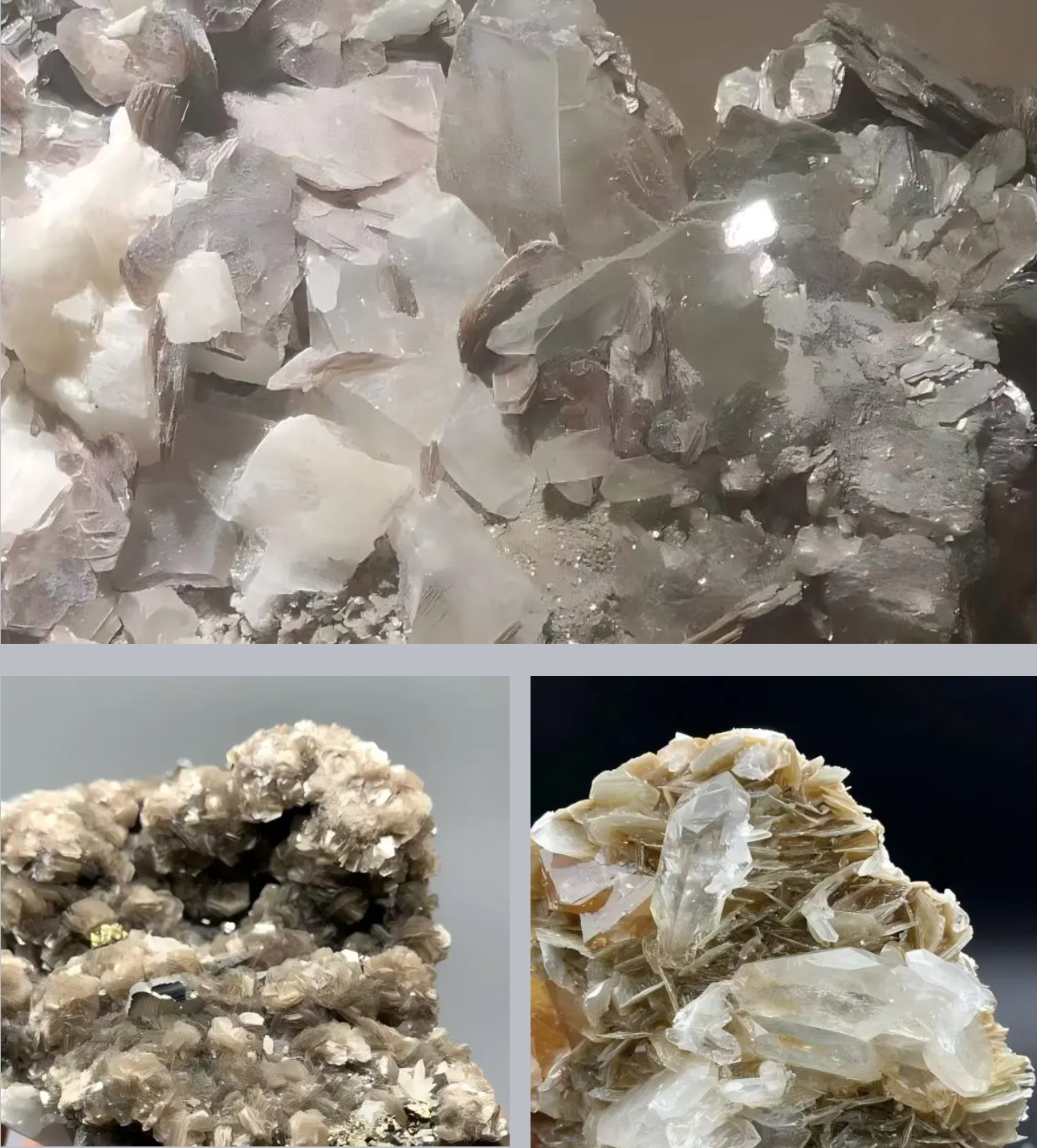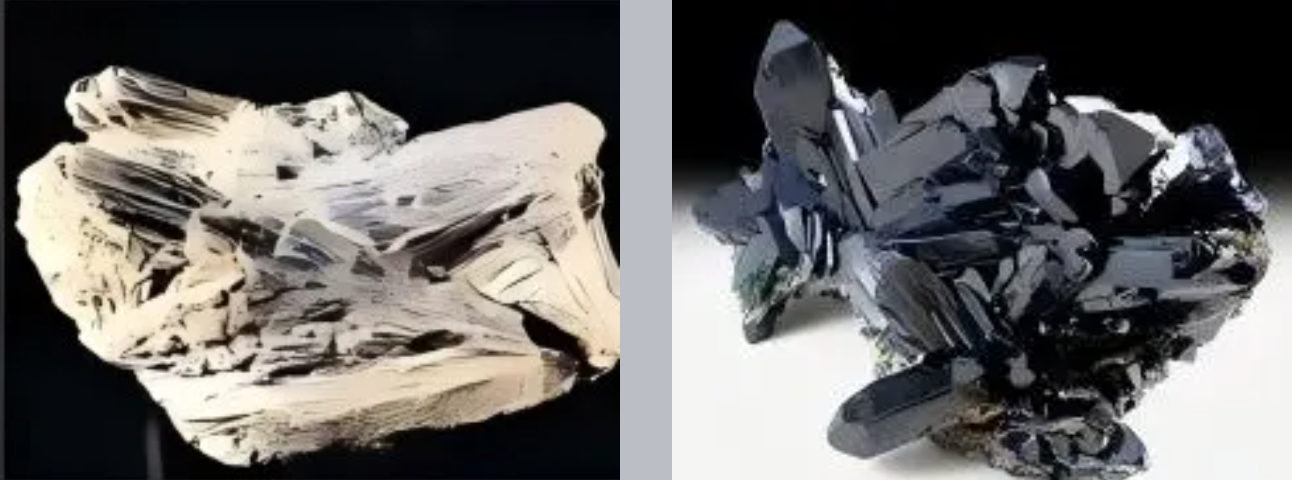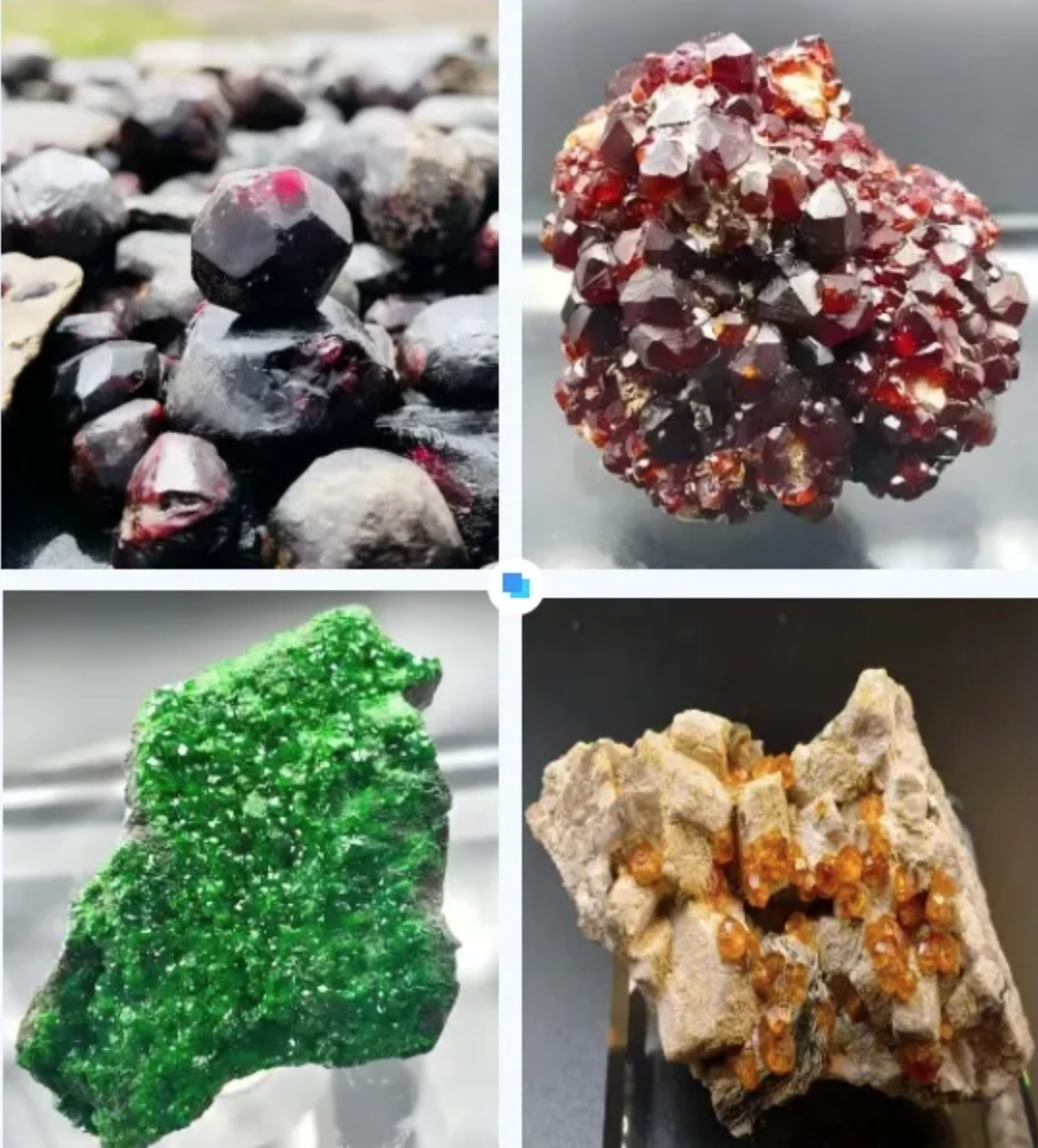Silicon and oxygen are the two most widely distributed elements in the Earth’s crust. Apart from forming SiO2, they also combine to form the most abundant silicate minerals found in the crust. There are over 800 known silicate minerals, accounting for approximately one-third of all known mineral species. Together, they make up about 85% of the Earth’s crust and lithosphere by weight. These minerals are not only the primary constituents of igneous, sedimentary, and metamorphic rocks but also serve as sources for many non-metallic and rare metal ores. Examples include quartz, feldspar, kaolinite, illite, bentonite, talc, mica, asbestos, wollastonite, pyroxene, amphibole, kyanite, garnet, zircon, diatomite, serpentine, peridotite, andalusite, biotite, and muscovite.
1. Feldspar
◆Physical Properties: Feldspar is a widely distributed mineral on Earth. Potassium-rich feldspar is called potassium feldspar. Orthoclase, microcline, and albite are examples of potassium feldspar minerals. Feldspar exhibits good chemical stability and is resistant to acids, generally difficult to decompose. Hardness ranges from 5.5 to 6.5, density from 2.55 to 2.75, and melting point from 1185 to 1490°C. It often occurs with quartz, muscovite, biotite, sillimanite, garnet, and minor amounts of magnetite, ilmenite, and tantalite.
◆Uses: Used in glass melting, ceramic raw materials, ceramic glazes, enamel raw materials, potassium fertilizer, and as decorative stones and semi-precious gems.
◆Selection Methods: Handpicking, magnetic separation, flotation.
◆Genesis and Occurrence: Found in gneisses or gneissic metamorphic rocks; some veins occur in granite or mafic rock bodies or their contact zones. Mainly concentrated in pegmatitic feldspar massifs or differentiated single feldspar pegmatites.
2. Kaolinite
◆Physical Properties: Pure kaolinite is white but often colored light red, yellow, blue, green, or gray due to impurities. It has a density of 2.61 to 2.68 and hardness ranging from 2 to 3. Kaolinite is used in the production of daily-use and industrial ceramics, refractory materials, papermaking, construction, coatings, rubber, plastics, textiles, and as a filler or white pigment.
◆Uses: Used in the production of daily-use and industrial ceramics, refractory materials, papermaking, construction, coatings, rubber, plastics, textiles, and as a filler or white pigment.
◆Selection Methods: Dry and wet magnetic separation, gravity separation, calcination, chemical bleaching.
◆Genesis and Occurrence: Primarily formed from silica-alumina-rich igneous and metamorphic rocks, altered by weathering or low-temperature hydrothermal replacement.
3. Mica
◆Physical Properties: Mica is often white, with shades of light yellow, light green, or light gray. It has a glassy luster, pearl-like on cleavage surfaces, and flexible but non-elastic thin sheets. Hardness ranges from 1 to 2 and density from 2.65 to 2.90. Mica finds uses in refractory materials, ceramics, electric porcelain, crucibles, fiberglass, rubber, papermaking, pigments, pharmaceuticals, cosmetics, plastics, and as an auxiliary material for fine art carving.
◆Uses: Used in refractory materials, ceramics, electric porcelain, crucibles, fiberglass, rubber, papermaking, pigments, pharmaceuticals, cosmetics, plastics, and as an auxiliary material for fine art carving.
◆Selection Methods: Handpicking, electrostatic separation, magnetic separation.
◆Genesis and Occurrence: Mainly produced by hydrothermal alteration of intermediate acidic volcanic rocks and tuffs, also found in aluminum-rich crystalline schists and some low-temperature hydrothermal quartz veins.
4. Talc
◆Physical Properties: Pure talc is colorless but often appears yellow, green, brown, or pink due to impurities. It has a glassy luster and a hardness of 1 on the Mohs scale. Talc is widely used as a filler in papermaking and rubber industries and as a whitening agent in the textile industry. It also has applications in ceramics, paints, coatings, plastics, and cosmetics.
◆Uses: Used as a filler in papermaking and rubber industries, as a whitening agent in the textile industry, and in ceramics, paints, coatings, plastics, and cosmetics.
◆Selection Methods: Handpicking, electrostatic separation, magnetic separation, optical sorting, flotation, scrubbing.
◆Genesis and Occurrence: Mainly formed by hydrothermal alteration and metamorphism, often associated with magnesite, serpentine, dolomite, and talc schist.
5. Muscovite
◆ Physical Properties: Muscovite is a type of mica mineral, often appearing in white, gray, yellow, green, or brown. It has a glassy luster with pearl-like on cleavage surfaces. Muscovite is used for fire extinguishing agents, welding rods, plastics, electrical insulation, papermaking, asphalt paper, rubber, pearl pigments, plastics, paints, and rubber as functional fillers.
◆Uses: Used as fire extinguishing agents, welding rods, plastics, electrical insulation, papermaking, asphalt paper, rubber, pearl pigments, plastics, paints, and rubber as functional fillers.
◆Selection Methods: Flotation, wind selection, hand selection, peeling, friction selection, fine grinding, ultrafine grinding, surface modification.
◆Genesis and Occurrence: Primarily the product of magmatic action and pegmatitic action, often found in granite pegmatites and mica schists, commonly associated with quartz, feldspar, and rare radioactive minerals.
Continuing the translation:
6. Sodalite
Sodalite is a triclinic crystal system, usually flattened cylindrical crystals with parallel stripes on the crystal surface. It has a vitreous luster, and the fracture exhibits a glassy to pearly luster. Colors range from light to dark blue, green, yellow, gray, brown, colorless, or bright grayish-white. Hardness ranges from 5.5 to 7.0, with a specific gravity of 3.53 to 3.65. The main minerals are sodalite and minor amounts of silica, with accessory minerals such as quartz, black mica, gold mica, and chlorite.
Sodalite is a regional metamorphism product found in crystalline schists and gneisses. World-famous producers include Switzerland, Austria, and other countries. When heated to 1300°C, sodalite transforms into mullite, a high-grade refractory material used in the manufacture of spark plugs, oil nozzles, and other high-temperature refractory ceramic products. Aluminum can also be extracted. Transparent crystals of beautiful colors can be used as gemstones, with deep blue being the most preferred. North Carolina in the United States produces deep blue and green gem-quality sodalite.
7.Garnet
◆Physical properties
Usually brown, yellow, red, green, etc.; transparent to translucent; vitreous luster, fracture with resinous luster; no cleavage; hardness 5.6~7.5; density 3.5~4.2.
◆Applications
Garnet’s high hardness makes it suitable for abrasive materials; large crystals with beautiful color and transparency can be used as gemstone raw materials.
◆Separation methods
Hand sorting, magnetic separation.
◆Genesis and occurrence
Garnet is widely distributed in various geological processes, forming different types of garnet due to different geological processes; calcium-aluminum garnet series are mainly produced in hydrothermal, alkaline rocks, and some pegmatites; magnesium-aluminum garnet series are mainly produced in igneous rocks and regional metamorphic rocks, gneisses, and volcanic rocks.
8. Biotite
◆Physical properties
Biotite is mainly found in metamorphic rocks and some other rocks such as granite. The color of biotite ranges from black to brown, red, or green. It has a vitreous luster, elastic crystals, hardness less than a nail, easy to tear into fragments, and is plate-shaped or columnar.
◆Applications
Mainly used in building materials fire protection, papermaking, asphalt paper, plastics, rubber, fire extinguishing agents, welding rods, jewelry, pearl pigments, and other chemical industries. In recent years, biotite has also been widely used in decorative coatings such as real stone paint.
◆Separation methods
Flotation, wind selection, hand selection, peeling, friction selection, fine grinding, ultrafine grinding, surface modification.
9.Muscovite
◆Physical properties
Muscovite is a type of mica mineral in the white mica group, a silicate of aluminum, iron, and potassium. Muscovite has dark-colored muscovite (various shades of brown or green, etc.) and light-colored muscovite (various shades of light yellow). Light-colored muscovite is transparent and has a vitreous luster; dark-colored muscovite is semi-transparent. Vitreous to submetallic luster, cleavage surface with pearly luster. Thin sheets are elastic, hardness 2~3, specific gravity 2.70~2.85, non-conductive.
◆Applications
It is widely used in the building materials industry, firefighting industry, fire extinguishing agents, welding rods, plastics, electrical insulation, papermaking, asphalt paper, rubber, pearl pigments, and other chemical industries. Ultrafine mica powder is used as a functional filler for plastics, coatings, paints, rubber, etc., to improve mechanical strength, enhance toughness, adhesion, anti-aging, and corrosion resistance.
Industrially, it is mainly used for its insulation and heat resistance, as well as its resistance to acids, alkalis, compression, and peeling properties, used as insulation materials for electrical equipment and electrical appliances; secondarily used in the manufacture of steam boilers, smelting furnace furnace windows, and mechanical parts.
◆Separation methods
Flotation, wind selection, hand selection, peeling, friction selection, fine grinding, ultrafine grinding, surface modification.
10. Olivine
◆Physical properties
Olive green, yellow-green, light gray-green, green-black. Vitreous luster, common shell-shaped fracture; hardness 6.5~7.0, density 3.27~4.37.
◆Applications
Used as raw materials for magnesium compounds and phosphates, used in the production of calcium-magnesium phosphate fertilizers; magnesium-rich olivine can be used as refractory materials; transparent, coarse-grained olivine can be used as gemstone raw materials.
◆Separation methods
Re-selection, magnetic separation.
◆Genesis and occurrence
Mainly formed by magmatic action, occurring in ultrabasic and basic rocks, associated with pyroxene, amphibole, magnetite, platinum group minerals, etc.
Post time: Jul-31-2024












